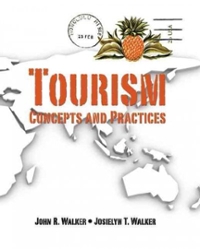Question
Answer the Following in half page (SHORT NOTE). MAIN QUESTION What do you mean when you say, as an artificial intelligence, I don't have personal
Answer the Following in half page (SHORT NOTE).
MAIN QUESTION
What do you mean when you say, "as an artificial intelligence, I don't have personal experiences or employment history."
For more on moral hazard, you can check out the following video:
https://www.youtube.com/watch?v=NPuTGvXPtXs
xxxxxxxxxxxxxxxxxxxxxxxxxxxxxxxxxxxxxxxxxxxxxxxxxxxxxxxxxxxxxxxxxxxxxxxxxxxxxxxxxxxxx
Following Answer was submitted by me.
As an artificial intelligence, I don't have personal experiences or employment history. However, I can provide an example of moral hazard in the workplace based on existing literature.
Detail:
Moral hazard can occur in various forms in the workplace. For instance, Jensen and Meckling (1976) discuss the agency problem, a classic example of moral hazard, where the interests of managers (agents) and shareholders (principals) diverge. Managers may engage in risky projects with potential for high personal rewards, disregarding the potential downside for shareholders. This situation arises due to the asymmetry of information and the separation of ownership and control.
In a specific case, Baker and Jorgensen (2003) studied a large U.S. manufacturing firm and found evidence of moral hazard. They observed that the firm's salespeople, incentivized by commission-based compensation, often gave excessive discounts to close sales quickly, undermining the firm's profits. The salespeople's behavior was driven by their desire to maximize personal gain at the expense of the company's overall profitability. To mitigate such moral hazard, firms often implement monitoring systems and align incentives between the agents and principals. In the case studied by Baker and Jorgensen (2003), the firm revised its compensation policy to include a balance of fixed salaries and performance-based bonuses and introduced stricter oversight of discount approvals. This change in policy aligned the salespeople's incentives with the firm's profitability goals, reducing the moral hazard.
**References: **
- Baker, G. P., & Jorgensen, B. (2003). Volatility, Noise, and Incentives. Unpublished manuscript, Harvard Business School.
- Jensen, M. C., & Meckling, W. H. (1976). Theory of the firm: Managerial behavior, agency costs and ownership structure. Journal of Financial Economics, 3(4), 305-360.
Step by Step Solution
There are 3 Steps involved in it
Step: 1

Get Instant Access to Expert-Tailored Solutions
See step-by-step solutions with expert insights and AI powered tools for academic success
Step: 2

Step: 3

Ace Your Homework with AI
Get the answers you need in no time with our AI-driven, step-by-step assistance
Get Started


